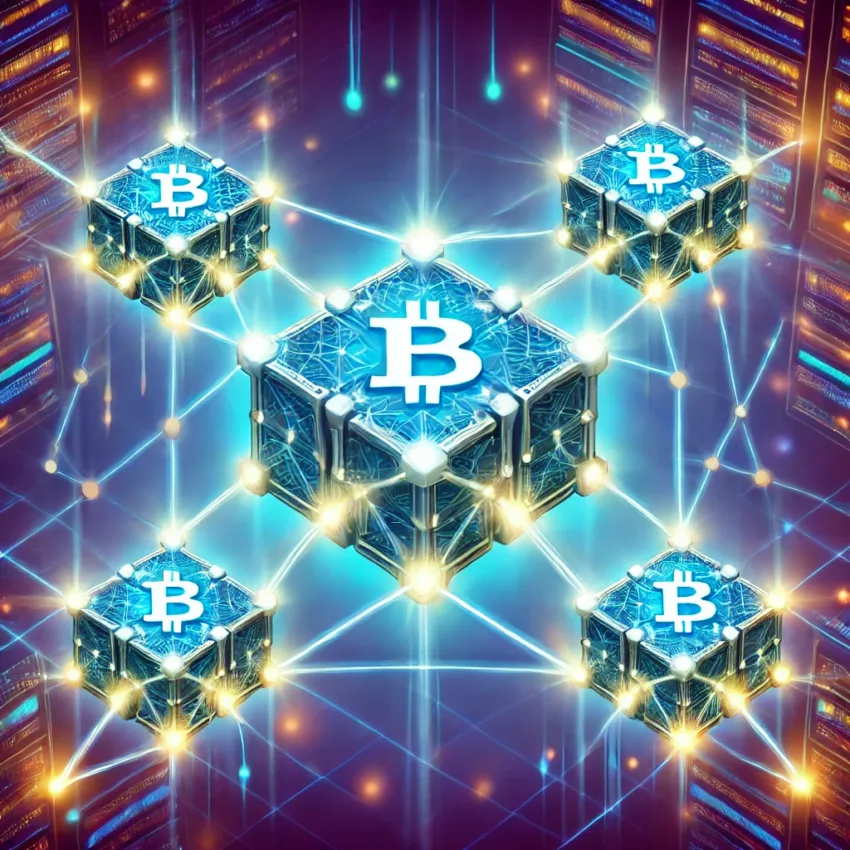Introduction: The Traffic Jam Problem 🚗🚦

Imagine you’re on a busy highway, stuck in traffic, and it’s moving at a snail’s pace. Everyone is trying to get to their destination, but there’s only one road, and it’s packed. Now what if we added more separated lanes and roads that would lead traffic to individual specific locations? Traffic would move much faster! This is the exact concept Sharding applies in a blockchain network – it adds multiple lanes to aid in efficiently processing transactions.
This post will break down the concept of blockchain Sharding so that you understand it even if you’re a beginner. So, without further ado, let’s get started! 🏊♂️
What is Blockchain Sharding? 🤔
Sharding the blockchain improves overall system scalability by splitting networks into smaller pieces called shards. These shards are then allocated their own standalone transactions and smart contracts, meaning the entire network is free from a heavy workload. Consider it like parting a giant pizza 🍕 to slices so that your friends have the ability to grab their desired slice much quicker than if they were served individually.
Prior to sharding, every node in a blockchain network was required to execute every transaction for a blockchain, Sharding is similar to asking every driver on the road to stop at every gas station irrespective of fuel requirements. Not an efficient strategy, right? Sharding changes that by dividing transactions across different groups (shards), and everything gets much smoother.
Why Do We Need Sharding? ⚡
Blockchain networks like Ethereum and Bitcoin are fantastic, but they face a huge problem: scalability. Here’s why:
- 🚀 Slow Transactions: As more people use blockchain, transactions become slower because every node must validate them all.
- 💰 High Fees: Congestion leads to higher gas fees, making transactions expensive.
- 🏋️ Heavy Network Load: The blockchain grows bigger over time, making it harder for new nodes to keep up.
Sharding solves these problems by redistributing the workload of each individual node. This way, instead of forcing every node to handle everything, each node only focuses on a specific shard.
How Does Sharding Work? 🛠️

Think of a library 📚 with thousands of books. If there was only one librarian responsible for organizing and finding books for every visitor, things would move at a snail’s pace. But if we divide the library into sections (fiction, history, science, etc.) and assign a librarian to each section, people can find their books much faster.
Similarly, blockchain sharding divides the blockchain into smaller sections (shards), where each shard processes a subset of transactions and smart contracts. Each shard maintains its own state, meaning they don’t need to know what’s happening in other shards. However, they can still communicate when needed.
Key Components of Sharding:
- Shard Chains: Each shard functions as a mini blockchain with its own data and transactions.
- Validator Nodes: These nodes handle transactions only within their assigned shard.
- Beacon Chain (Coordinator): A special chain that manages communication between shards and ensures everything stays secure.
Benefits of Sharding 🌟
Sharding comes with some huge perks for blockchain networks:
- ✅ Scalability Boost – Transactions get processed in parallel, making the network significantly faster. No more waiting in long queues!
- ✅ Lower Transaction Fees – Less congestion means lower gas fees, making blockchain more affordable for everyone. 💰
- ✅ Decentralization Remains Intact – Unlike some scalability solutions that rely on third parties, sharding still allows blockchains to be decentralized.
- ✅ Less Storage Requirement – Since each shard handles only a fraction of the data, nodes don’t have to store the entire blockchain history.
Challenges of Sharding 😬
Of course, nothing in life is perfect – except maybe pizza. 🍕 Here are a few challenges sharding faces:
- ❌ Cross-Shard Communication: If a transaction involves multiple shards, coordinating them securely and efficiently can be tricky.
- ❌ Security Risks: If one shard is compromised, it could potentially affect the whole network. However, new cryptographic techniques (like zk-rollups) are being developed to mitigate this.
- ❌ Complex Implementation: Sharding requires a major redesign of blockchain networks, which is why it’s taking time for platforms like Ethereum to roll it out.
Real-World Example: Ethereum 2.0 🏗️
Ethereum is one of the biggest blockchain networks facing scalability issues. To tackle this, Ethereum 2.0 is introducing sharding as part of its upgrade. Once fully implemented, Ethereum will be split into 64 shards, each processing its own transactions. This will make Ethereum faster, cheaper, and more efficient for everyone – from casual users to dApp developers. 🚀
Conclusion: Is Sharding the Future? 🔮
Sharding is a powerful candidate on the list of solutions for blockchain scalability. Sharding uses the concept of splitting a network into smaller pieces to ensure that transactions will be processed faster and with lower costs, granting hope for many developers while keeping the decentralization alive.
So, the next time someone complains about slow and expensive blockchain transactions, you can hit them with your newfound sharding knowledge and impress them! 💡😉
Do you think sharding is the answer to blockchain scalability? Or do you think technologies like Layer 2 solutions will come out on top? Let’s share opinions in the comments! 👇
Previous Post: Unlocking Blockchain Security: 9 Consensus Mechanisms You Should Know
Next Post: 4 Blockchain Types You Need to Know
